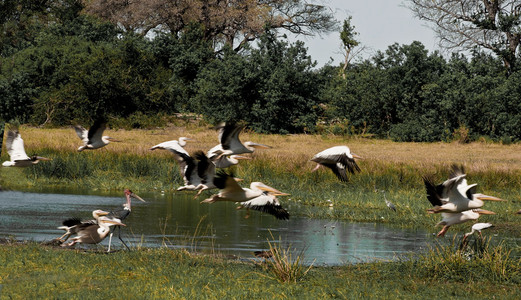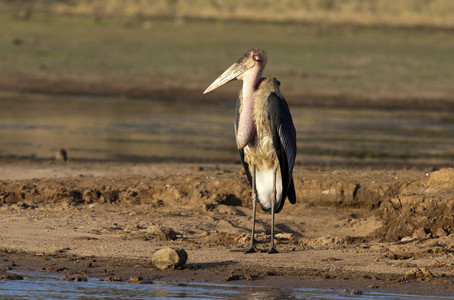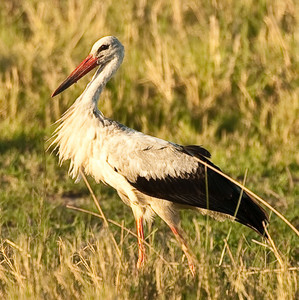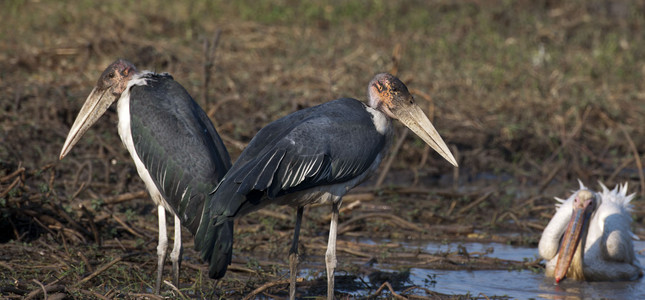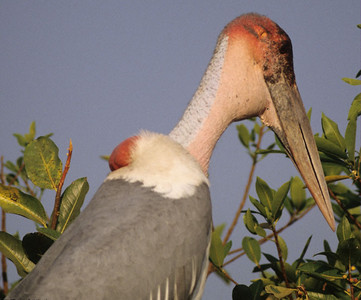
Marabou Stork
A Marabou Stork is a very large bird, and a strong flyer. It may weigh as much as 25 lbs. I once had the opportunity to stand alongside one that had become acculturated to people---its head came up to my shoulder (I'm 6 ft. tall.) The red air-sac behind his neck, and red coloration of the head indicate that this male is in his breeding colors. [Shinde Island, Botswana].
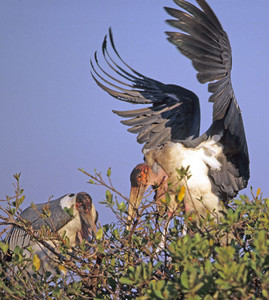
Marabou Stork
A mating pair of Marabou Storks showing the male's vigorous courting behaviour. Note the the red gular air-sac (term refers to its placement beneath the neck) is partially hidden by small branches, as is the reddened coloration of his head that occurs during breeding season. See next image. [Shinde Island area, Botswana].
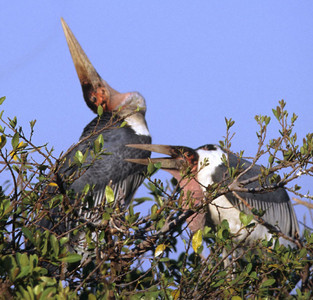
Marabou Stork
The same pair of mating Marabou Storks: The male's (R) vigorous courting shows his red gular air sac hanging on his neck, just beneath the jaw. The female (L) seems to have a small 'bump' beneath her jaw, probably exaggerated by the position of her head. [Shinde Island area, Botswana].
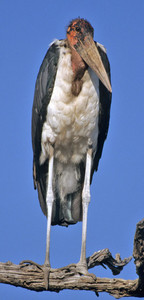
Marabou Stork in Tree
A different mature Marabou Stork male is standing on a dead limb 20 feet above ground. This male, not in breeding season, shows that the gular area has only small vestiges of the sac, in contrast with the male in the previous 3 images. However, might the pink coloration of his face suggest that breeding season is approaching. (Chobe NP, Botswana].
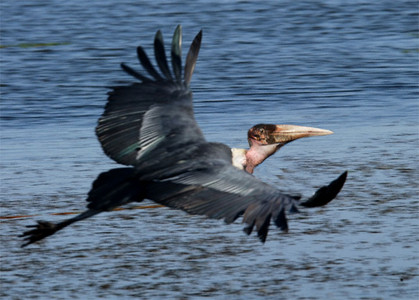
Marabou Stork
A Marabou Stork, a strong flyer, is in full flight. [Near Lechwe Plains, Southern Zambia].
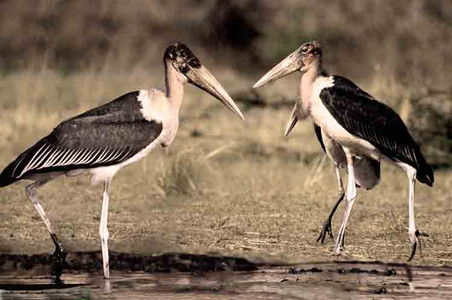
Marabou Stork
Marabou Stork female (L) and chick, partially hidden, behind the male (R). [Zambezi River, near Lechwe Plains, Zambia)].
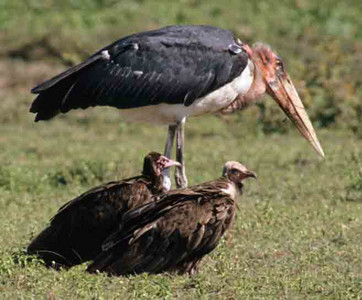
Marabou Stork with Hooded Vultures
Marabou Storks are omnivorous. They especially like meat. It is common to see them around a kill by some other animal, eating carrion, or raiding garbage dumps. The little birds are Hooded Vultures who provide good size-comparison. Because of their small, weak beaks they are restricted to picking up the left-over small scraps. [Serengeti, Tanzania].
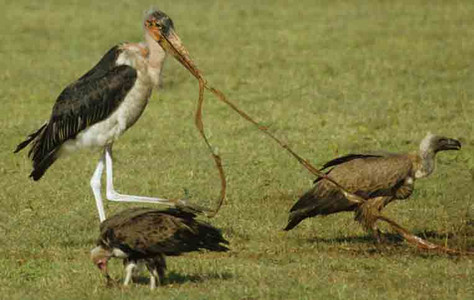
Marabou Stork with Hooded Vultures
This Marabou is pulling on small intestine from the kill. The little bird in front is a Hooded Vulture, and the large bird on the right is a Whitebacked Vulture (note beak size and heft), which is one of the larger vultures in East Africa. [Serengeti, Tanzania].
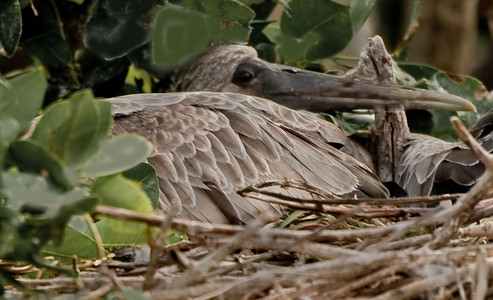
Marabou Stork
Although this Marabou Stork chick seems pretty big, it is still on the nest. Its nestling period may be as much as 110 days, thus this chick may be 6-8 weeks from fledging. [Bird Haven, Botswana].
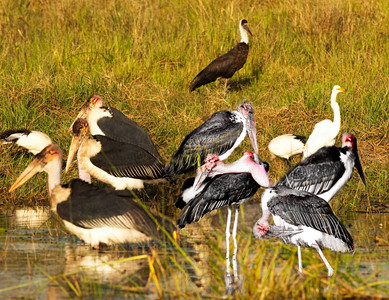
Marabou Stork
A small group of Marabou Storks at the end of a large pond. The bird in the far-background is a Woollynecked Stork. [Botswana].

Marabou Stork
The preceding image was part of this very large gathering of Marabou Storks. There were over sixty of them! They may have come here expecting to eat, but the fish population had already been depleted by six large crocodiles [Botswana].
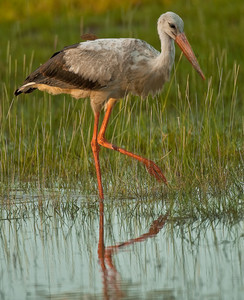
White Stork
The White Stork is a migrant, and is the bird that is the subject of children's nursery stories.This a good illustration of the red legs which often appear white, because the bird cools its legs by defecating on tem. The bill may also appear more reddish.[Botswana].
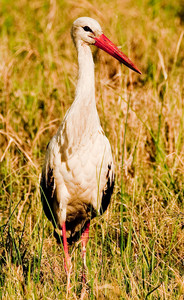
White Stork
The red coloration of the legs and beak are a truer depiction of the White Stork. Its diet includes large insects, small reptiles, and the chicks of ground- nesting birds.[Botswana].
